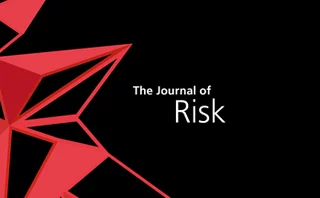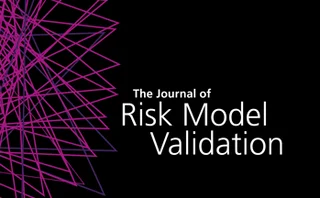Parametric modelling
Does the asymmetric exponential power distribution improve systemic risk measurement?
The authors use a parametric estimation for CoVaR and compare the goodness-of-fit and backtesting of AEPD with other commonly used distributions using data from the Chinese banking sector from 2008-2019.
The volatility paradigm that’s stirring up options pricing
‘Rough volatility’ models promise better pricing and hedging of options. But will they catch on?
Modeling loss given default regressions
The authors investigate the puzzle in the literature that various parametric loss given default (LGD) statistical models perform similarly, by comparing their performance in a simulation framework.
The European intraday electricity market: a modeling based on the Hawkes process
This paper deals with the modeling of trading activity on the European electricity intraday market by a self-exciting point process.
Study suggests banks may be better off with simpler VAR models
Non-parametric VAR models perform well in calm markets, but miss the mark in volatile periods
Old-fashioned parametric models are still the best: a comparison of value-at-risk approaches in several volatility states
The authors present backtesting results for 1% and 2.5% VaR of six indexes from emerging and developed countries using several of the best-known VaR models, including generalized autoregressive conditional heteroscedasticity (GARCH), extreme value theory…
EU banks grapple with NMRF proposals for volatility models
EBA options for lighter capital treatment of parametric curves could prove impractical
Nonparametric versus parametric expected shortfall
In this paper, the authors use influence functions as a basic tool to study unconditional nonparametric and parametric expected shortfall (ES) estimators with regard to returns data influence, standard errors and coherence.
On the correlation and parametric approaches to calculation of credit value adjustment
This paper develops a connection between the Hull–White parametric approach and the PCL correlation approach for CVA calculation.
Evaluating the performance of the skewed distributions to forecast value-at-risk in the global financial crisis
This paper models the tail behavior of daily returns and forecasting VaR in order to evaluate the performance of several skewed and symmetric distributions.
Stress testing in non-normal markets via entropy pooling
Ardia and Meucci introduce a parametric entropy pooling approach to portfolios stress testing
Energy Risk Europe: Commodity trading demands big data, says Trafigura CRO
Commodity trading firms urged to use advancements in big data to gain strategic advantage
Marcelo Cruz: Robust estimation
A number of recent papers submitted to the Journal of Operational Risk on robust estimation reflect the concerns of the op risk modelling community about the reliability of parameter estimation in severity distributions
A historical-parametric hybrid VAR
A historical-parametric hybrid VAR
Tradition Re's Dutch auction hedges 2010 hurricane risk
Tradition Re, the US reinsurance division of interdealer broker Tradition, has completed a Dutch auction on behalf of a reinsurer aiming to hedge risk during the 2010 hurricane season in Florida.
Benchmarking asset correlations
Basel II stipulates that the asset correlation to be used in calibration of obligor risk weights is20%. Here, Alfred Hamerle, Thilo Liebig and Daniel Rösch use a parametric model to empirically obtain asset correlations from a large database of…
Benchmarking asset correlations
Basel II stipulates that the asset correlation to be used in calibration of obligor risk weights is 20%. Here, Alfred Hamerle, Thilo Liebig and Daniel Rösch use a parametric model to empirically obtain asset correlations from a large database of…
Minimising extremes
Portfolio diversification often breaks down in stressed market environments, but the co-movement of asset prices in a tail risk regime may be modelled using a coefficient of tail dependence. Here, Yannick Malevergne and Didier Sornette show how such…











